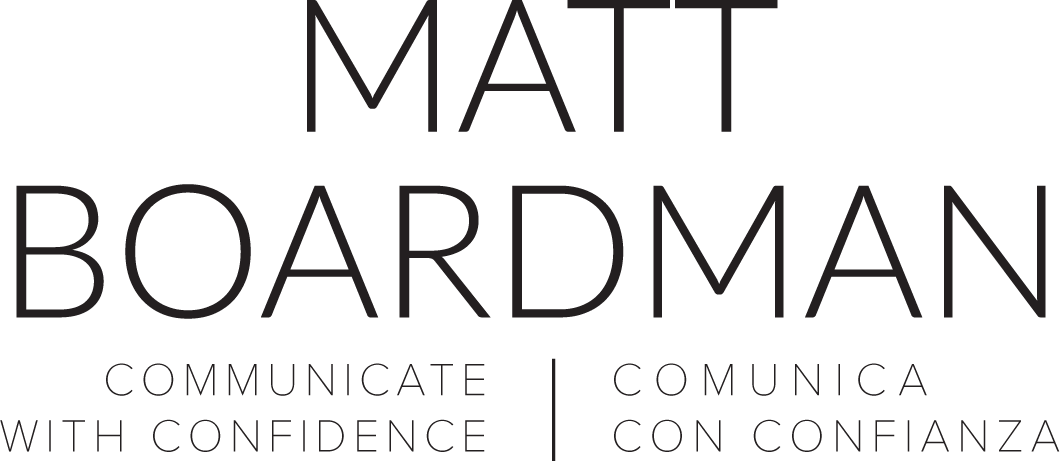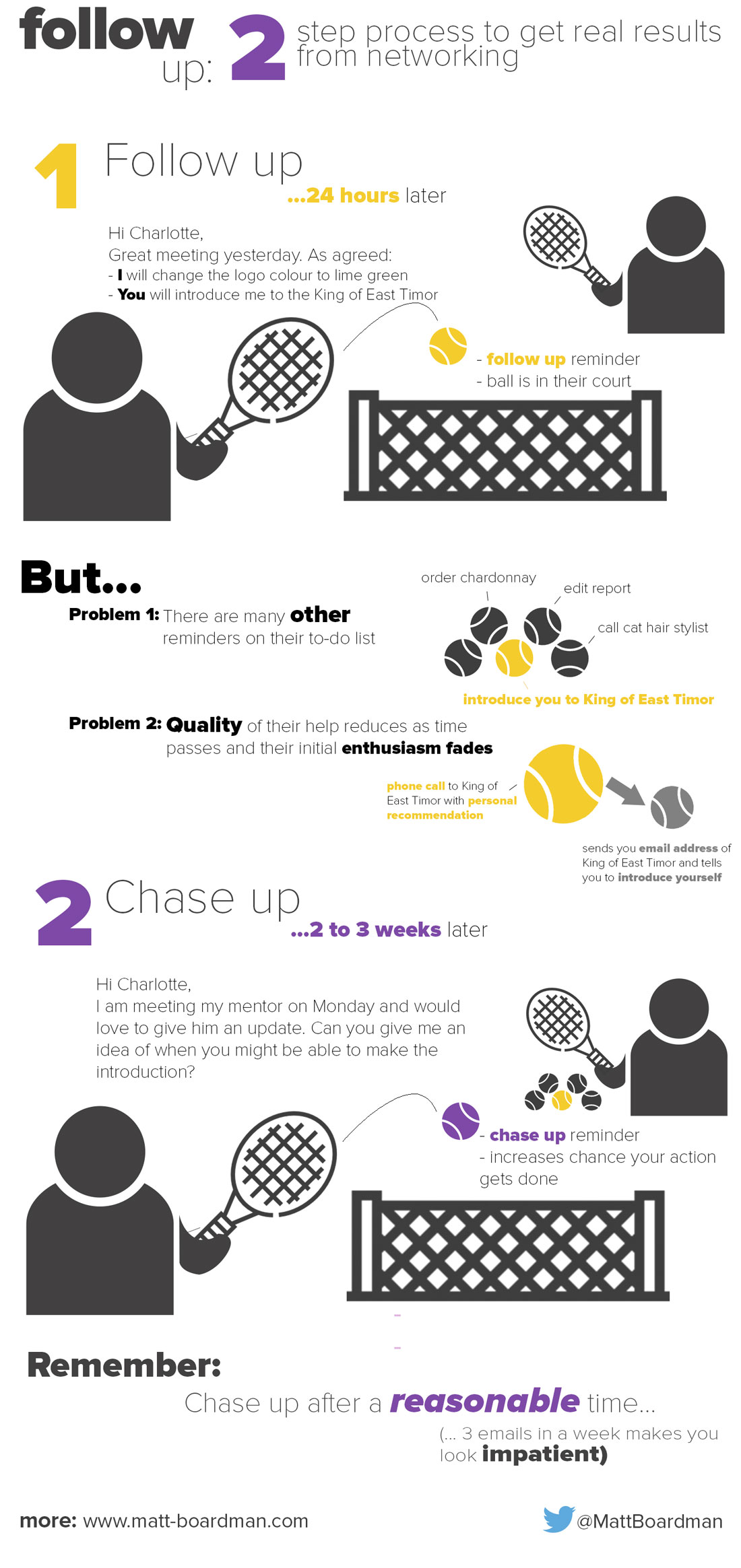For any startup, it is often during a meeting or phone call that an investor or contact agrees to help you by completing an action: for example send you a document or introduce you to a useful contact. But because of poor memory and fading enthusiasm, a great opportunity will often be lost - unless you employ two simple techniques: follow up and chase up.
The problem
When a conversation with an investor finishes, it is far too easy to make two false assumptions:
- Memory - The investor has a flawless memory and/or to-do list system and will remember to do this in the next few days
- Enthusiasm - The investor’s initial enthusiasm to complete the action will remain at the same level as time passes
Follow up- the 24 hour rule
You might have the ability always to remember to complete an action you’ve agreed to. Lucky you. Or you might have a comprehensive and reliable to-do list system which will remind you tomorrow to complete an action you agreed to. If you don’t, check out David Allen’s Getting Things Done: I follow his methods and cannot recommend him enough.
But even if that is the case, it is very possible that your investor or contact does not. Which is why you should follow the 24 hour rule: after any meeting or phone call, send a follow-up email with a brief reminder of what each person has agreed to do. Not only does this clarify exactly what was agreed (the reason why business meetings conventionally have formal minutes), it also acts as a reminder of what actions the other person agreed to. Crucially, it often reminds them when they are at their computer: and can do something about it straight away.
Chase up- the half-life of enthusiasm
You have diligently stuck to the 24 hour rule and sent a follow-up email after the meeting. Well done! But what do you do if they don’t reply to your message? Only a small percentage of us then chase up a couple of weeks afterwards. To use a spurious Olympic-themed tennis analogy, when we send a follow up email we tend to satisfy ourselves that the ball is in the other person’s court, and that we don’t have to do anything further.
The problem is that, unlike in Olympic tennis, there are many balls in that person’s court, and they don’t have the time nor the enthusiasm to return all of them. If you want to make sure that they complete your action among their interminably hectic to-do list, you will often need to send another ball to remind them.
Think of a time when you got excited an idea during a conversation with someone.
“That sounds like a brilliant idea. It’s a crime that our streets have been devoid of musical paving slabs for so long.”
In the weeks following a conversation, other tasks and other ideas quickly take over a person’s attention. For most people, their adrenaline and enthusiasm sparked by the initial idea fades.
This half-life of enthusiasm means that when your investor agrees to something, such as to introduce you to an important contact of theirs, the likelihood of them doing the introduction to the best of their ability reduces following the initial agreement. An introduction made the day after the meeting might involve a personal phone call to the person with a recommendation of your project. But if two months pass before they make the introduction, their initial enthusiasm may have faded and it’s more likely to be seen as just another chore on the to-do list. An introduction made after two months is more likely to be reduced to sending you the person’s email address and suggesting that you introduce yourself. So try sending a chase up email or phone call after a reasonable period of time without hearing anything: for example 2-3 weeks.
Of course, you have to accept that even with a chase-up call, some people will simply not find the time to make the introduction. Sometimes this is out of your control and the agreed action was never going to happen. But following the chase up process makes it much more likely to.
Tip: We are often reluctant to chase someone up after a period of time because we are afraid of irritating them. Ignore this feeling for 2 reasons: 1) you are far more aware of your call or email than the other person is, and 2) chasing up within a reasonable time frame makes you look organised, and generally fosters respect rather than irritation.
Warning: As with all networking interactions, you need to use your own judgement. A couple of reasonably timed reminders should not annoy most people, but real impatience could sour their initial willingness.
Summary
- In networking, if someone agrees to do an action for you, you can increase the chance that they’ll remember to do it by sending them a follow up message 24 hours.
- Because people’s enthusiasm fades quickly you are in a race against time, and you might need to send a chase up 2-3 weeks later.
Want more? Increase your chances of networking well by learning how to have better conversations: with open questions.
What do you find hardest about networking? Let me know in the comments below, on Twitter or on Facebook.


